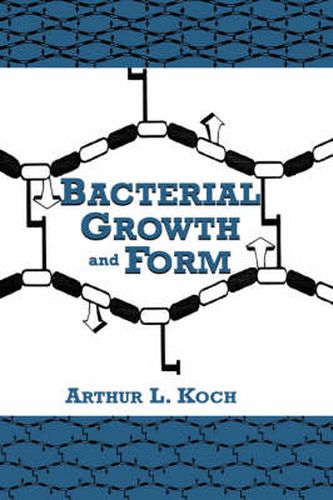Readings Newsletter
Become a Readings Member to make your shopping experience even easier.
Sign in or sign up for free!
You’re not far away from qualifying for FREE standard shipping within Australia
You’ve qualified for FREE standard shipping within Australia
The cart is loading…






This title is printed to order. This book may have been self-published. If so, we cannot guarantee the quality of the content. In the main most books will have gone through the editing process however some may not. We therefore suggest that you be aware of this before ordering this book. If in doubt check either the author or publisher’s details as we are unable to accept any returns unless they are faulty. Please contact us if you have any questions.
How are bacterial cells, which possess neither actin nor myosin, nevertheless able to achieve their characteristic shapes? Why are not all bacteria spherical? Over the years, Arthur Koch has explored the surface stress theory of cell wall growth along with some of the alternatives. This book is a authoritative summing up of his work in this area. It brings together biochemical, biophysical, and physiological principles, and builds upon both ultrastructural and physiological methodologies. Bacterial Growth, Evolution and Form deals with fundamental differences between eukaryotes and prokaryotes; the mathematics of growth; protein, cell wall, and nucleic turnover; the surface stress theory; the structure and biosynthesis of peptidoglycan; the biophysical engineering of the cell envelope; the development of poles in key model bacteria such as E coli, B subtilis, and S faecium; the measurement of turgor pressure, osmotic pressure, and wall stress; cell twisting; the inner and outer membrane; and the connection between wall growth and chromosome replication. Concluding chapters discuss evolution, the retention of structural genes, and variable responses to environmental fluctuations. This book should be of interest to microbiologists and professionals in the fields of evolution, cell biology, biochemistry and biophysics.
$9.00 standard shipping within Australia
FREE standard shipping within Australia for orders over $100.00
Express & International shipping calculated at checkout
This title is printed to order. This book may have been self-published. If so, we cannot guarantee the quality of the content. In the main most books will have gone through the editing process however some may not. We therefore suggest that you be aware of this before ordering this book. If in doubt check either the author or publisher’s details as we are unable to accept any returns unless they are faulty. Please contact us if you have any questions.
How are bacterial cells, which possess neither actin nor myosin, nevertheless able to achieve their characteristic shapes? Why are not all bacteria spherical? Over the years, Arthur Koch has explored the surface stress theory of cell wall growth along with some of the alternatives. This book is a authoritative summing up of his work in this area. It brings together biochemical, biophysical, and physiological principles, and builds upon both ultrastructural and physiological methodologies. Bacterial Growth, Evolution and Form deals with fundamental differences between eukaryotes and prokaryotes; the mathematics of growth; protein, cell wall, and nucleic turnover; the surface stress theory; the structure and biosynthesis of peptidoglycan; the biophysical engineering of the cell envelope; the development of poles in key model bacteria such as E coli, B subtilis, and S faecium; the measurement of turgor pressure, osmotic pressure, and wall stress; cell twisting; the inner and outer membrane; and the connection between wall growth and chromosome replication. Concluding chapters discuss evolution, the retention of structural genes, and variable responses to environmental fluctuations. This book should be of interest to microbiologists and professionals in the fields of evolution, cell biology, biochemistry and biophysics.